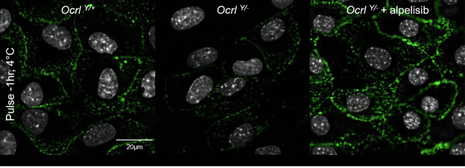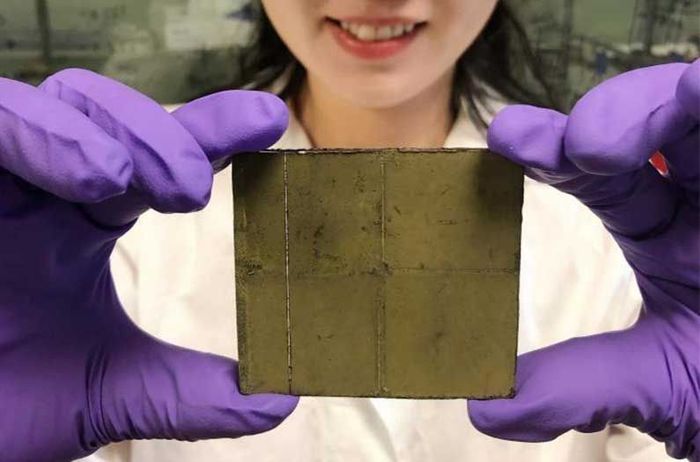Cambridge Spotlight: a new strategy to treat kidney dysfunction
Elena Everatt shares insight into the latest developments from the globally renowned Gurdon Institute in the treatment of kidney problems associated with Lowe syndrome, and reiterates the importance of curiosity and creativity within the field of research.

The group of Dr. Jennifer Gallop at the Gurdon Institute, a research facility at the University of Cambridge, has recently made great progress in treatment strategies for patients with Lowe syndrome. Lowe syndrome is a debilitating genetic condition, characterised by a range of symptoms, such as cataracts in newborns, intellectual disability, and kidney problems. Currently, patients have only supportive treatments available. In a collaboration with nephrologist professor Olivier Devuyst at the University of Zurich, the team of Dr. Gallop has identified a drug (currently used for cancer therapy) that may help in the treatment of kidney disease associated with the syndrome. So how did their basic research – the study of vesicle movement inside cells – lead to the spotting of a new treatment?
The key to the work was an understanding of internalisation of proteins into cells. Dr. Gallop’s team had shown that, in healthy individuals, there are two phospholipid signals in cell membranes that trigger an assembly of actin (a protein) filaments on the membrane. This assembly can then push vesicles (that contain proteins) into the cell.
Knowing how this mechanism goes wrong in the disease was also crucial. Lowe syndrome is known to arise due to deficiencies in an enzyme called OCRL, which normally degrades the phospholipid signals for actin assembly. In the absence of OCRL, the levels of the phospholipid signals on the cell membrane increase. This, in turn, leads to abnormal actin filament assembly on membranes with a downstream effect of impairing protein-filled vesicle movement within cells. In the kidney, defective intracellular trafficking of these vesicles leads to protein loss via the urine, as they are not reabsorbed as they would normally be.
Thus, knowing the molecular detail of the process, the group identified an enzyme which could be targeted to treat kidney malfunction. Dr. Gallop and her team spotted that inhibitors of the enzyme phosphoinositide 3-kinase (PI3K), could counteract the abnormal processes in cells of patients with Lowe syndrome.
“Thus, knowing the molecular detail of the process, the group identified an enzyme which could be targeted to treat kidney malfunction.”
Fortunately, to find a drug that would target the enzyme PI3K, they did not have to go far – such inhibitors have already been developed and are used for treating some types of cancer. The teams focused on one called alpelisib, a drug with relatively few side effects, already approved for the use in breast cancer. They then went on to test the effects of the drug alpelisib on kidney cells and mouse models. Professor Devuyst’s team showed that the drug improves endocytosis in OCRL-deficient kidney cells by using fluorescence microscopy to show that a fluorescently-labelled protein was internalised more efficiently upon treatment with the drug.
The results of the experiments in mice were very promising as well: the drug restored the reabsorption of proteins from urine and alleviated the physiological symptoms of kidney malfunction. Thus, the data from both cell culture and mouse models converged to show that the cancer drug alpelisib worked in the desired way, opening possibilities for repurposing it to treat kidney malfunction.
Now the teams are excited to take these discoveries further. Having done experiments in cell lines and mice, it is not yet clear whether the drug will work in patients and whether it will alleviate the multiple other symptoms of Lowe syndrome. Therefore, the groups are investigating the possibility of beginning clinical trials. Of note, the strategy of drug repurposing is a cost-effective way of developing a treatment for the disease – as Lowe syndrome is very rare, the development of an entirely new drug is a difficult commercial proposition.
“Drug repurposing is a cost-effective way of developing a treatment for the disease.”
Importantly, it was collaborations between experts in their field that enabled the findings. As well as sharing of knowledge internationally, they involved a network of scientists within the Gurdon institute itself: expert microscopy image analysis was made possible with the help of Dr. Richard Butler in the core facility, while Professor Stephen Jackson down the hall shared his knowledge of translation, having developed another cancer drug. Not surprisingly, the Gurdon institute has already given rise to around a dozen start-up companies and several drugs from here have been successfully translated into the clinic.
As well as offering a potential strategy to help patients with Lowe syndrome, the work is an example of how curiosity-driven basic science can give new possibilities for treatment. “I was not initially studying the disease, our fundamental research unexpectedly led to an idea for drug repurposing”, noted Dr. Gallop. Within any scientific field, initial questions asked can lead to discoveries that solve other problems. Hopefully, in the field of healthcare, basic research will continue to spark ideas that benefit patients.
 News / SU stops offering student discounts8 January 2026
News / SU stops offering student discounts8 January 2026 News / Uni-linked firms rank among Cambridgeshire’s largest7 January 2026
News / Uni-linked firms rank among Cambridgeshire’s largest7 January 2026 Comment / Plastic pubs: the problem with Cambridge alehouses 5 January 2026
Comment / Plastic pubs: the problem with Cambridge alehouses 5 January 2026 News / New movement ‘Cambridge is Chopped’ launched to fight against hate crime7 January 2026
News / New movement ‘Cambridge is Chopped’ launched to fight against hate crime7 January 2026 Comment / What happened to men at Cambridge?31 December 2025
Comment / What happened to men at Cambridge?31 December 2025










